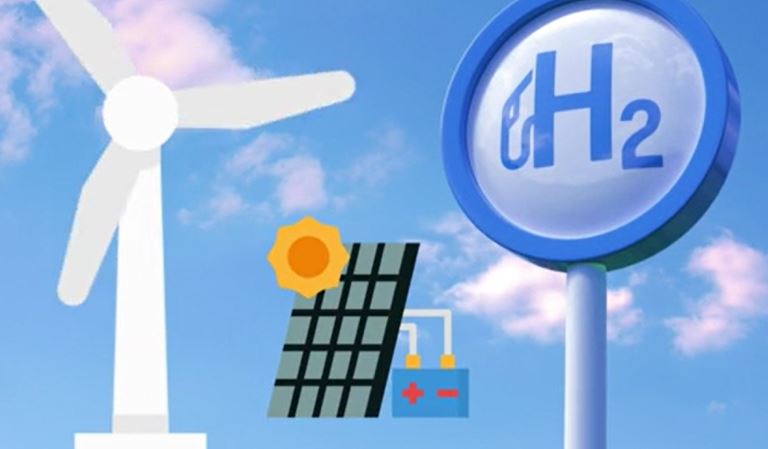H2SITE, a TECNALIA spin-off company, has devised a membrane reactor that provides industries with their own hydrogen.
TEKNOPOLIS, an Elhuyar programme produced for ETB, has produced a report in which it reviews the advantages of and challenges to be faced by hydrogen as a new energy source, and where to find out more about some of the projects aligned with the Basque Hydrogen Strategy presented by the Basque Energy Agency (EVE), the Basque Hydrogen Corridor, the membrane reactor created by H2SITE and the BenortH2 electrolysis plant.
Under the commitments made in the Paris agreement, the CO2 we emit into the atmosphere will need to be cut by 45% by 2030, reaching a neutral emission level by 2050. Decarbonising the economy requires alternative energies to replace fossil fuels. In this respect, hydrogen is gaining ground.
Advantages of hydrogen
- Juan Manuel Fernández, from the Energy Efficiency and Sustainability Department at the Basque Energy Agency, stated that “the biggest advantage of hydrogen is that it can be stored and transported. It can be produced from renewable energy, and can be consumed at any time”.
- Petronor is the biggest producer of hydrogen in the Basque Country and also its main consumer. They do not currently use it as an energy source but as a raw material in oil refining. The idea is to start manufacturing green hydrogen to decarbonise its production processes. Elías Unzueta, Chief Innovation Officer at Petronor Innovación, believes that “the most important thing, or the biggest advantage, is that it generates water when used as a fuel and is very environmentally neutral.” But, “for this to be an advantage, the prerequisite has to be that hydrogen is also produced in a process that does not generate CO2”.
- H2SITE, a spin-off from the collaboration between TECNALIA, the French company ENGIE, the University of Eindhoven (TUe) and the Deep Tech Venture Builder, TECNALIA Ventures, has devised a membrane reactor capable of separating hydrogen from different raw materials, thereby making it possible for industries to produce their own hydrogen.
For Andrés Galnares, CEO of H2SITE, “hydrogen combines very well with all the intermittent renewable energies that are now very much in vogue. Using this intermittent excess renewable energy not in the grid but in an electrolyser to convert it into hydrogen, feeding it into the grid and then separating it at the point of consumption is a model we believe in.”. Using the H2SITE membrane reactor, “if, for example, we put ammonia into that reactor today, we generate hydrogen or carbon locally. In exactly the same way, if we put methanol into this reactor, we will generate hydrogen or carbon locally”.
- Amaia del Villar, Principal at White Summit Capital, and spokesperson in this report for the BenortH2 electrolysis plant, the first green hydrogen plant operating in Spain that will generate fuel for transport, clean electricity and synthetic gas, assures that hydrogen “is a key energy vector for decarbonising a number of sectors that currently do not have an electric alternative, e.g. the heavy transport sector or certain industrial processes that require a lot of heat.. Right now, green hydrogen is a virtually unique alternative to help decarbonise these sectors and meet the decarbonisation targets we have set ourselves”.
Full report on hydrogen
- You can view the full report via this link: Hydrogen vies to become the energy of the future
Further information
TEKNOPOLIS has been broadcast weekly since 1999, and offers content from both the Basque Country and beyond its borders.
Scientific dissemination is one of the fundamental pillars of Elhuyar. Its field of activity covers linguistic technologies, research, communication services and advice on equality, Basque language and participation, translations, etc.

